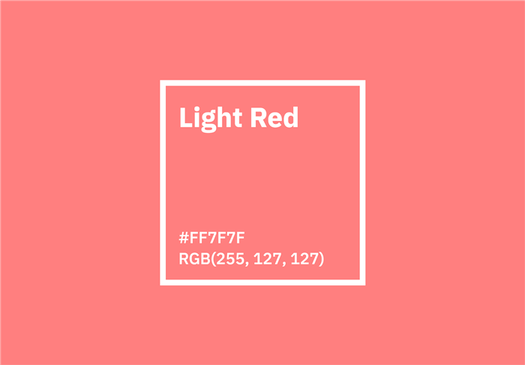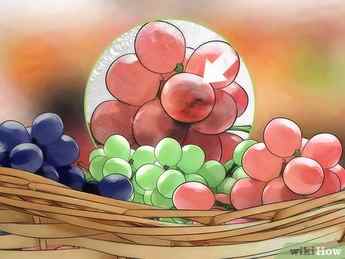Burgundy is a deep, reddish-brown color named after the red wine signature to the Burgundy region of France. Sometimes confused with maroon, which has more brown and is, burgundy is a brighter, more vivid color often described as a combination of red, brown and purple.
How to Make Red Paint in Every Shade
In art, red is an important color that is used to make new colors and evoke warmth, but how do you learn how to make red paint on your own?
In school, we were taught that the primary colors of red, blue and yellow are the base for creating secondary colors, such as orange, green or purple. The question is, how can we create the wide variety of red hues from bright fire truck red to the deep reds of rich wine?
In order to learn how to make red paint in different shades, we must explore how our eyes perceive color, and a set of guidelines to mixing and using colors called “color theory.”
So, what colors make red paint in different shades? Understanding how colors interact with one another and practicing mixing different colors will help you learn how to make red paint in every shade you can dream of!
Jump to Section
- Mixing Colors for Beginners
- The Science Behind the Color Red
- What Colors Make Red Paint?
- How to Make Red in Acrylic Paint
- How to Make Red Paint Burgundy
- How to Make Light Red Paint
- How to Make Dark Red Paint
Learn Color Theory
To expand your artistic knowledge, you might explore the ideas of color theory from the basic color wheel, color harmony and color context to the relationships between colors.
Mixing colors allows artists to evoke emotions in their work through the range of shapes and colors they choose. Incorporating different tints and shades can set the tone for anything from a dark, moody painting to a bright, joyful scene.
Tints refer to hues (or basic colors) that have been lightened by adding white while shades refer to hues that have been darkened by adding black. Mixing tints or tones with other colors lets you create an infinite palette for artistic expression.
Understanding color theory makes it easier to learn how to make red paint, how to make brown paint and all colors of the spectrum.
Try Painting Classes
From beginning painters to seasoned artists, painting classes are an excellent way to grow your knowledge and practice your skills.
Art classes are a great way to learn tips and tricks for developing your art from evoking emotions with color to discovering how to make red paint in the perfect shade even if you don’t have red paint at home.
Spark your creativity, hone your techniques and relax with an artistic evening of unique painting classes near you. You can also explore different painting styles and techniques from watercolor to abstract art from the comfort of your own home or studio with online painting classes.

The Science Behind the Color Red
According to Smithsonian Libraries, the science of color stemmed from Isaac Newton’s experiments with prisms and light in the 1660s, from which he identified the colors of the visible spectrum we know today.
In order to learn how to make the color red, you need to understand the relationship between light and color.
Color and Light
The sun’s rays contain all of the colors of the rainbow, which creates a mixture known as white light. When white light hits a white surface, it absorbs no color and reflects all the colors equally. However, a black surface absorbs all of the colors while reflecting nothing back.
When light shines on an object that is neither white nor black, some colors are absorbed while others are reflected. The colors that are reflected are the ones that we can see.
The Color Spectrum
The physical makeup of an object affects the way light is reflected and determines the length of its electromagnetic waves. When light bounces off of an object, our eyes measure the length of the electromagnetic waves and then our brains use this information to translate those waves into colors.
The range of possible colors is called the spectrum with longer wavelengths resulting in warmer colors such as yellows, oranges and reds and shorter wavelengths resulting in cooler colors such as blues and greens.
Additive Mixing vs. Subtractive Mixing
So, what does this tell us about how to make red paint?
We know that color comes from the way an object reflects light, but when we blend objects together, those objects’ abilities to reflect light also become mixed. This can happen in two ways: additive mixing and subtractive mixing.
Additive mixing occurs when wavelengths combine, so if the two wavelengths together equal the same wavelength as the color red, that object will also appear red.
Subtractive mixing occurs when wavelengths are removed, generally through the use of paints or dyes. When these pigmented layers absorb some of the wavelengths, it can change the perceived color.
Now that we know how our eyes perceive the color red, what does that mean for understanding how to make a red color? What colors together make red paint?

Light Red Color
Light red is a whitish shade of red that has the hex color code #FF7F7F . The simplest way to make light red is to add some white to the color red.

Light Red Color Code
In the next table you can find the RGB, CMYK, and Hex color codes for light red.
| Hex: | #FF7F7F |
| RGB: | 255 127 127 |
| CMYK: | 0 64 39 0 |
Light Red vs Pink
Light red and pink are similar in their bright, warm tones, but they differ in their undertones. Pink has a more pronounced purple or blue undertone, while light red leans towards orange or yellow undertones. This gives light red a slightly more vibrant and energetic feel compared to the softer, more muted pink.
Light red pairs well with black, white, and navy blue. These colors provide a striking contrast to the brightness of light red while adding sophistication and balance to any design.
- Amazon color scheme
- Microsoft color scheme
- Xbox One color scheme
- Burger King color scheme
- Red Bull color scheme
- FedEx color scheme
- Levi’s color scheme
- John Deere color scheme
- Heineken color scheme
- Samuel Adams color scheme
- Pabst Blue Ribbon color scheme
- WhatsApp color scheme
- Lyft color scheme
- Pinterest color scheme
- Taco Bell color scheme
- Monster Energy color scheme
- UPS color scheme
- Miller High Life color scheme
- Keystone Light color scheme
- Busch color scheme
- Busch Light color scheme
- Uber color scheme
- Netflix color scheme
- Subway color scheme
- Coca-Cola color scheme
- USPS color scheme
- Natural Light color scheme
- Michelob Ultra color scheme
- Miller Lite color scheme
- Budweiser color scheme
- Airbnb color scheme
- Slack color scheme
- Starbucks color scheme
- Pepsi color scheme
- DHL color scheme
- Coors Light color scheme
- Bud Light color scheme
- Johnny Walker color scheme
- Android color scheme
- Spotify color scheme
- IBM color scheme
- McDonald’s color scheme
- Kool-Aid color scheme
- Jack Daniel’s color scheme
- Messenger color scheme
- Snapchat color scheme
- Apple color scheme
- Facebook color scheme
- Oracle color scheme
- HP color scheme
- Dunkin’ Donuts color scheme
- Gatorade color scheme
- Sprite color scheme
- Jim Beam color scheme
- YouTube color scheme
- Instagram color scheme
- Twitter color scheme
- Google color scheme




